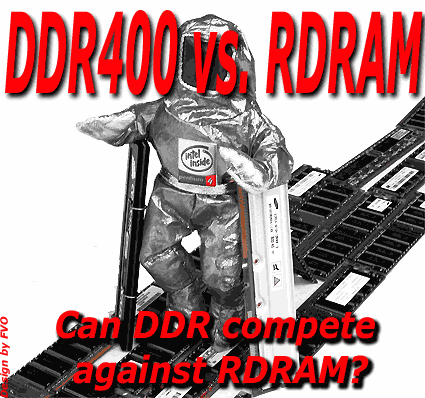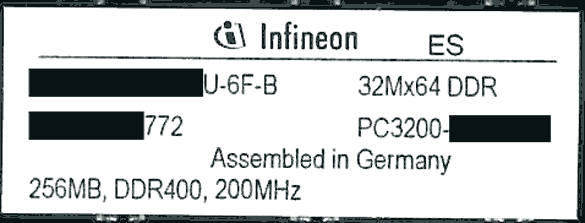Unstoppable: DDR400 vs. Rambus
Introduction
Full Speed Ahead: DDR400 Vs. RDRAM (PC1200)
The role that the processor plays in determining the performance of a PC system is often overestimated by many users. In practice, slow RAM modules in combination with the chipset are what hampers optimal performance - the result is that the CPU cannot run on a full load.
A hand-picked DDR400 memory module from Infineon (engineering sample), which was able to run at over 200 MHz memory clock without any difficulties. Even at a setting of CL2.5, the test platform ran stably. Infineon "officially" states that they not produce DDR400 for the time being.
The cards are on the table. In the race to achieve the highest memory performance, we used the most powerful, hand-picked modules straight from the labs of the manufacturers. Let's start out with some concrete numbers first: with the DDR400 module the latency is 2.5, and the RDRAM modules include special versions for 600 MHz memory clock (PC1200). Here, the access time is 32 nanoseconds, and in the meantime, the fastest modules with 35 ns are due to hit the market in a few weeks. So the occasion that gave rise to this test is obvious: with the onslaught of motherboards and memory modules for DDR3 on the market, the question to ask is to what extent the overall performance can be boosted with DDR200 and DDR266. In addition, the Rambus platform with the Intel Pentium 4 has become available for prices that are more reasonable than ever before. The fact is unavoidable: RDRAM memory for PC800 (400 MHz memory clock) is sometimes even less expensive than DDR333 memory (166 MHz memory clock and CL2.5).
Get Tom's Hardware's best news and in-depth reviews, straight to your inbox.
Current page: Introduction
Next Page Full Speed Ahead: DDR400 Vs. RDRAM (PC1200), Continued
